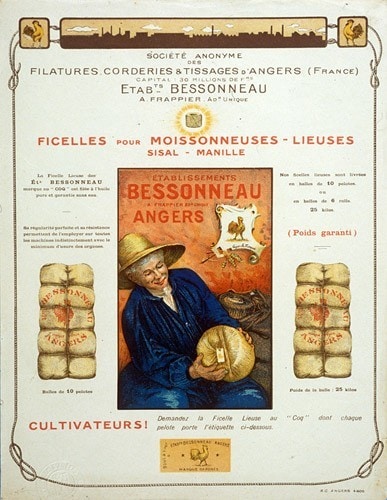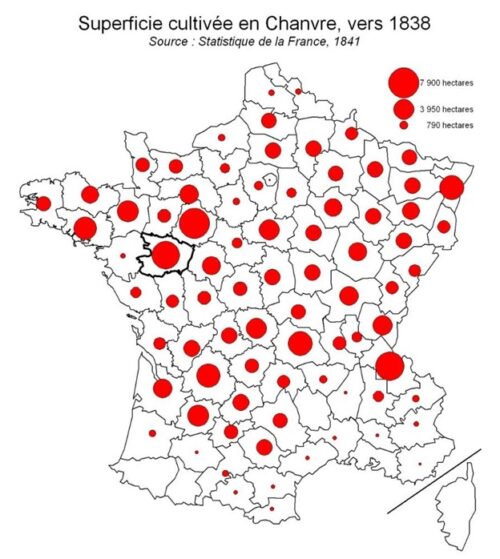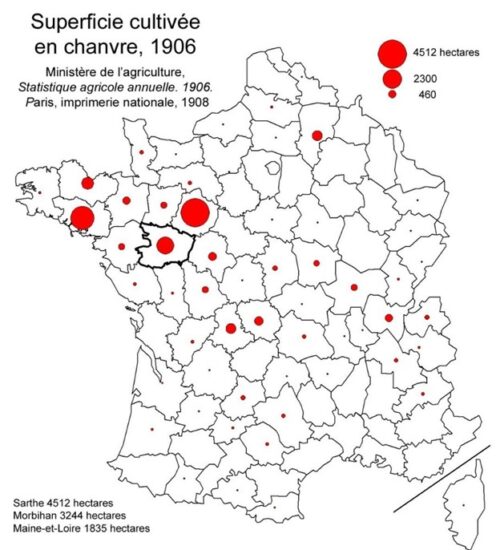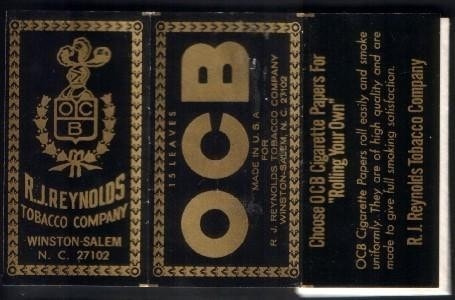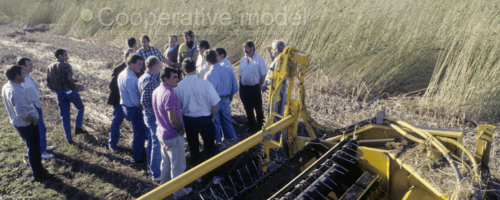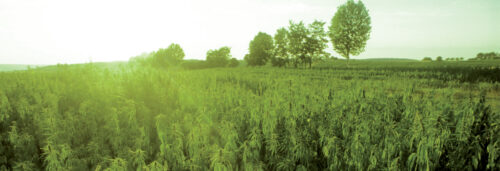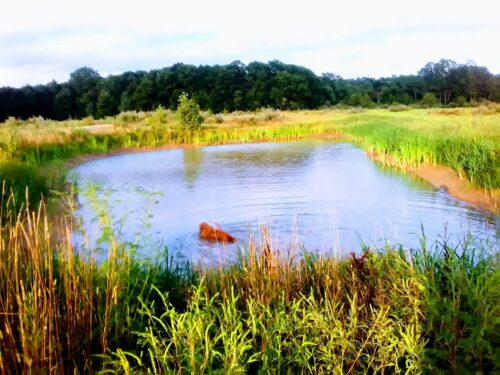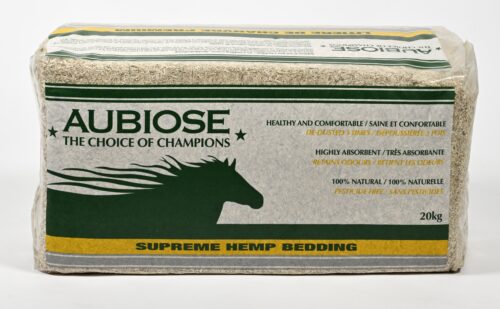
Our Aubiose hemp bedding products have a rich history, grown and processed by a farmer owned cooperative that has been producing hemp for more than 50 years. France never banned industrial hemp cultivation so Aubiose is a truly a generational hemp product. We rely on their expertise to meet the expectations of our customers.
On this page, we tell the story of the world’s favorite bedding product!
Ordering Aubiose Bedding in USA
Aubiose Bedding Explained
There is nothing like walking into a horse barn that’s been bedded with fresh Aubiose.
- Little to no dust in air
- Clean and dry surface
- Fresh smell
It’s the unique absorbency and performance of the Aubiose product.
The tradition of growing hemp in France is more than 50 years old. The quality that our customers love is the result of decades and centuries of grass-roots hard work, risks, trial and error, feedback, evolution, and adaptation. Since hemp has had an unfair time in America, we think it’s fair to team up with the best in rebuilding it. Aubiose has been critical to our mission of advancing industrial hemp in America and arming innovators with natural, reliable materials.
Some Aubiose Bedding & Overall Hemp History
Even though France never made true hemp cultivation illegal, all forms of natural fiber production DID struggle during the industrial revolution. Even in France, the hemp industry was almost dead by the 1960’s. The fact that the Aubiose farmers managed to continue to cultivate hemp into the present day is a truly fascinating story that defied all odds- indeed, it is due to these farmers that we have a modern hemp industry at all!
Aubiose is produced by a group of farmers who organized themselves around a cooperative model, and it was the farmers themselves who invested in the equipment necessary for processing the hemp stalks. To this day this facility is 100% owned and controlled by the farmers themselves. In 1987, the cooperative introduced a production agreement with its farmers by establishing payment linked to quality. This is the only system of it’s kind in all of Europe and perhaps the entire world, and partially explains the consistency of quality and specification that our customers have become so used to.
As many of our readers know, industrial hemp is one of mankind’s oldest crops, and has been cultivated for almost as long as agriculture itself has existed.
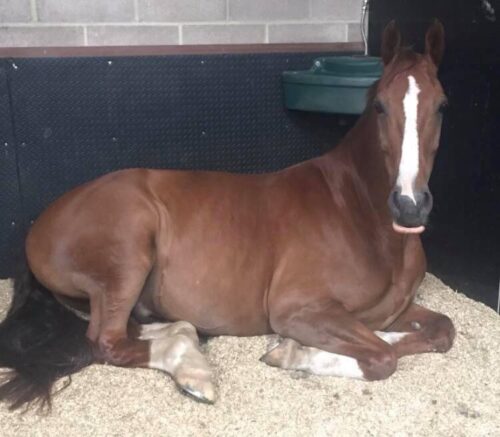

However, what is happening today, with all of the rage for hemp bedding, is essentially a new step in hemp’s long history. Never before have the pure hemp hurds– formerly a waste product– been utilized at such a large scale. This is the first time that a true hemp hurd industry has emerged. This is a strong statement, since, as we’ve said- true hemp has a long history in mankind’s agricultural development, going back thousands of years. But for most of that history, the primary use of the hemp stalk has been for textiles.
Hemp textiles are made by stripping the “bark” of the hemp plant from the inner woody core. This “inner wordy core” in the case of the hemp plant, is popularly known as “hemp hurds”. But these were not the material our ancestors sought; it was the bark (or “bast”) itself that was important to them. This “bast” or “bark” material is what we commonly refer to as “hemp fiber” and is what is used for textiles. The hemp hurds / inner woody core were generally a waste product for most of history.
The process of separating the bast fiber from the woody core was expensive and labor intensive. The hemp plant is a tough plant to work with! (Talk to Us before growing industrial hemp!) It was not until the modern day that this process- known as “decortication”(to “de-core” or remove the core / the hemp hurds) was actually perfected. The most fundamental contributor was Aubiose!
The birth of the Aubiose brand was the first time an actual viable market for the “hemp core” or hemp hurds was created. This was a huge step in the development of a modern hemp industry, because it meant there was now no waste, and the entire plant could be sold! It was a more profitable way of farming hemp, which was viable and competitive in the difficult market of the 20th-21st centuries.
The brand quickly caught on in France for horses- and soon after in England, which became the largest consumer of hemp bedding, even compared to France. After receiving recommendations from veterinarians, it was not long before the product became popular for all kinds of animals.
We want to truly emphasize how fascinating and miraculous this great “comeback” of hemp was. The way the trend was going after the industrial revolution, we shouldn’t have a hemp industry at all!
The Decline of Hemp and the Rise of Aubiose Bedding in France
Our friend Andre Ravachol, in his article series about the history of hemp in France, covered the decline of hemp in detail. There was much more to the decline than simply “laws”. It was actually in the 19th century when hemp production truly began to decline; long before the introduction of the infamous “Marihuana Tax Act”. For example, by 1914, there 14 times fewer cultivated acres of industrial hemp than in 1841.1
There were a few reasons for this. One key reason was the replacement of natural fibers with synthetic fibers for making rope. Another key reason was the replacement of sailing navigation for steam propulsion, since sails were a common outlet for hemp. Competition from exotic imported natural fibers also played a part.
According to Emmanuel Brouard, who wrote the article “Rise and decline of hemp in the 19th century”, (and who M. Ravachol interviewed in his research): “the economic crisis of the 1880s led to a poor sale of hemp, all the more so as imports tended to increase sharply, so outlets were reduced. Farmers in the Anjou valley are therefore massively converting to seed production, particularly beets. But this reconversion has been planned for a long time: seed production and horticulture have been developing since the middle of the century. Hemp cultivation declined less sharply in the Loire valley to the west of Ponts de Cé (Chalonnes, Montjean), which then became the new hemp-growing heart of Anjou”.
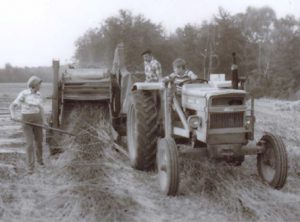
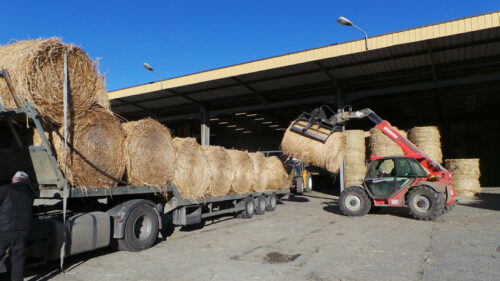
The growth of synthetic industries in both World Wars only continued this downward trend for hemp, and all of these pressures effectively killed textile hemp production in France.
However, somehow a hemp industry survived. Since, as we mentioned, the hemp textile industry had been completely killed in France, the only remaining outlet at that time was the paper market! Meeting the needs of the paper industry after WW2 was what essentially gave form to what would become the Aubiose cooperative. In the 1960’s, it was still a group of less than one hundred loosely organized farmers. They delivered all of their hemp straw to – a single paper pulp factory called SA des Papeteries BOLLORÉ which was the exclusive customer for their hemp.
The Bollore company has an interesting history. They are the creators of the famous OCB rolling paper which was launched in 1918. By 1947 they were the exclusive suppliers for the American cigarette brands Camel, Chesterfield, Philip Morris, & Old Gold. These papers were indeed made with hemp and linen, though a large portion of the material came from old rags and sails, made from hemp and linen, that had reached the “end of their life”!2
But much of the Bollore hemp was freshly cultivated by the Aubiose farmers themselves.
When the Bollores factory in Troyes closed, the Aubiose farmers were determined to carry on farming hemp. It was on February 15th, 1973, that the farmers decided to form their own organized cooperative. By 1977 the number of farmers in the cooperative had grown to 273; their focus was still the paper market. It was in 1985 when they entered the horse bedding market and the AUBIOSE brand was finally created.
Today, the idea of making a highly marketable product out of hemp hurds has caught on, and, inspired by Aubiose, a number of new producers have entered the hemp bedding market. But Aubiose was the bedding that started it all! Today the cooperative is still committed to ecological agricultural practices, and this is the main factor that cements our bond with them. The farmers cultivate various types of soil, using methods of Biodiversity and Ecosystems: no pesticides and no irrigation.
So where is this all leading?? We did not team up with Aubiose simply to import and sell a product. We believe in this style of agriculture. And we think the USA hemp industry has a long way to go. So why not build on the success of what we have seen already works? Our “Transitional supply chain” strategy is about just that, recreating the success of Aubiose in France and bringing it to America.
The purpose of the Hemp Bedding Initiative (hempbedding.org) is to generate massive demand for hemp hurds, particularly hemp bedding for animals. The idea is a part of the greater Transitional Supply Chain strategy to recreate the French hemp success on American soil. Since a lack of active markets is the #1 thing holding hemp back, the best thing we can do to encourage hemp farming in America is create a massive market for hemp bedding. Since there is so much potential for growth and so many more people out there who can benefit from it! And as we’ve seen, there is no better brand to do it with than Aubiose.
Ready to try Hemp Bedding?
And here’s the best Dog there ever was…doin permaculture and stuff.

